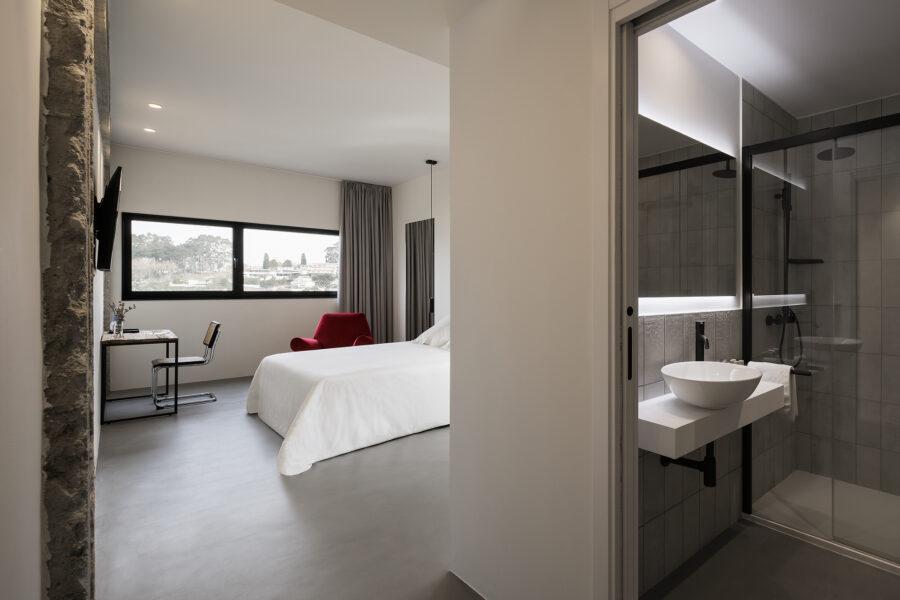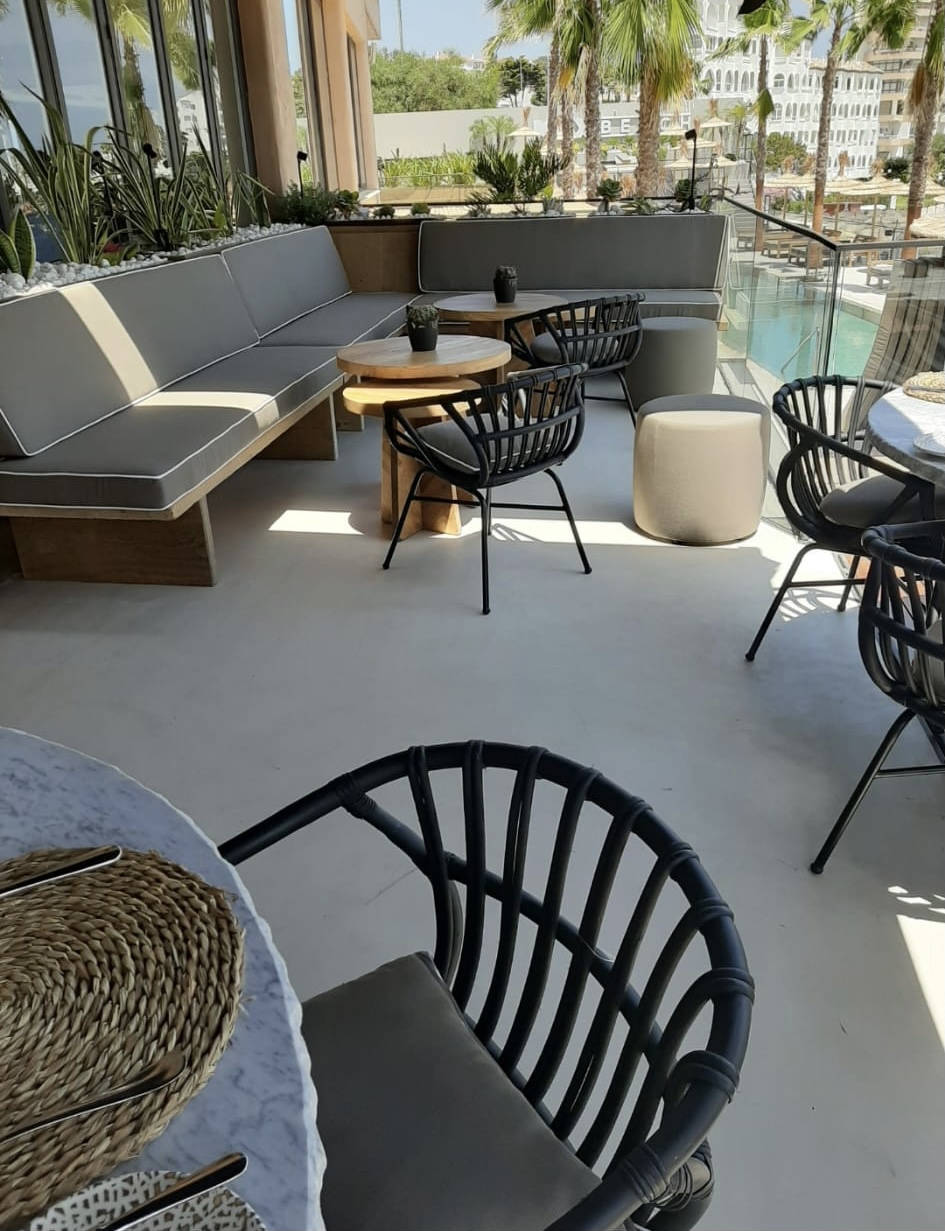Opinions on microcement: pros and cons of this coating
Microcement is a coating that has become increasingly popular over the last few years in interior and exterior decoration. A coating that has become a real trend in the renovation of homes and businesses because of the advantages it offers.
A building material which application is only reserved for an experienced professional. Otherwise, mistakes can be made during installation that can lead to problems with microcement. This is why there are all kinds of opinions about this covering.
In this article we are going to analyse the main pros and cons of this continuous coating, which offers a wide variety of decorative solutions, in order to clarify and resolve any doubts that may arise about it.

Pros of microcement
The pros of microcement have captivated construction companies and design and decoration professionals such as architects, interior designers and decorators. These advantages have led to more and more people opting for this coating in the renovation of all types of homes and businesses.
Microcement is a very versatile covering with a wide range of decorative options. We can find microcement floors in hotels, restaurants or offices; kitchen or bathroom walls coated with microcement; all kinds of furniture and microcement swimming pools; terraces...
These are the eight main pros that have made microcement one of the preferred materials by experts for interior and exterior decoration.
1. No building work or debris with microcement
One of the most important pros of microcement. As it is a continuous coating without expansion joints, there is no need to use machinery. Microcement is applied on top of the surface material to be renovated, whether it is a floor, wall, ceiling, swimming pool or furniture. No building work is required and, therefore, no rubble is generated. Not to mention the feeling of spaciousness it brings to any room.
2. Excellent adhesion of microcement
In relation to the previous advantage, it is worth highlighting the excellent adhesion of microcement as it is a super flexible material. A factor that speaks very well of this coating as it can be applied on a wide variety of materials: tiles, ceramics, tiles, cement, plasterboard, plaster, marble, concrete...
3. Microcement is suitable for interiors and exteriors
Microcement is an ideal coating for interiors and exteriors. But you have to know which type to use (bicomponent, monocomponent or ready-to-use) for each occasion.
At Topciment we have designed five different microcement systems with various granulometries, each one depending on the surface to be coated, the finish to be achieved and the resistance that each one offers.
4. The thickness of the microcement does not affect the structural load
One of the most notable particularities of microcement is its minimal thickness, between 2 and 3 millimetres. This advantage means that whatever the material on which the smoothed microcement coating is to be applied, it will not affect the structural load of the building in question.
5. Microcement is very durable and resistant
Unlike other coatings, microcement stands out as a very durable material that does not crack. Its properties are not lost with the passage of time, but it continues to be a coating that is highly resistant to traffic, knocks, scratches and sunlight, among many others.
6. Multiple finishes and colours with microcement
The textures that can be achieved with microcement are unique. Multiple finishes depending on the application, the pigment chosen and, above all, the sealer used.
At Topciment we have a wide variety of varnishes, depending on the finish you want to give the surface coated with smoothed microcement: gloss finish, matte, super matte, satin and even non-slip and waterproof.
The customisation of this coating is unlimited thanks to the wide palette of Topciment microcement colours. Pigments that give surfaces their own personality.
7. Waterproof and anti-slip microcement
One of the spaces where the use of microcement is most widespread is in bathrooms. This has happened because this coating can offer a waterproof finish if a sealant is used that gives it this capacity. At Topciment we have Topsealer Pro +, a polyurethane varnish that automatically makes smoothed microcement waterproof. This is why it is very common to find shower trays lined with microcement, basins, sinks and bathtubs as well as walls and floors.
But there is more. Surfaces coated with microcement can also be given an anti-slip finish with our Topsealer WT Anti Slip water-based coating- no more slipping!
8. Underfloor heating in microcement
The last but not least advantage of microcement is its good thermal conductivity. An advantage thanks to which smoothed microcement is perfectly compatible with underfloor heating. In fact, it is one of the best building materials for underfloor heating. In the following article you will find out why and what is the protocol for installing the flooring.

Advantages and disadvantages of microcement
It should be noted that if a quality material is used and the application is carried out by a professional, microcement will not have any drawbacks. The appearance of fissures, cracks, marks and stains, the problems that most concern the smoothed microcement, are mainly due to failures in fundamental steps in the application of microcement or to the poor state of the substrate that serves as the base for the new coating.
Making mistakes in microcement application
The application of microcement has very specific steps. Altering the order or making mistakes in the process, especially in priming and sealing, will automatically lead to an undesirable result. Therefore, we insist that the installation of smoothed microcement must be carried out by a professional applicator. We describe below the most frequent mistakes when applying microcement.
1. Applying microcement at too low or too high a temperature.
The ideal ambient temperature for applying microcement is between 15ºC and 25ºC. If the coating is installed at a temperature below 15ºC or above 25ºC, problems may arise.
If the temperature is too low, a factor that occurs in the winter season, the surface covered with microcement may take a long time to harden properly. On the other hand, if the temperature is too high, the micro cement will harden too quickly.
2. Mixing the microcement pigment incorrectly
Pigmenting microcement properly is key. If the instructions are not followed carefully, there may be an excess of clusters causing dark streaks on the microcement coating surface.
To obtain the wide variety of microcement colours in the Topciment catalogue, the dosage indicated on each label must be respected for both the quantity and type of microcement used.
The pigment should also be shaken vigorously until a homogeneous liquid without irregularities is obtained. Then pour a little of the mixing liquid into a container, add all the pigment and mix thoroughly. Then add little by little the microcement and the rest of the mixing liquid in the same container until the viscosity required for each application and a homogeneous microcement colour is achieved.
3. Not respecting the steps when installing microcement
The application of microcement requires certain steps that must be followed to the letter. Not following them can be fatal for the final finish.
The installation of microcement on floors or walls, for example, is not the same. The type of smoothed microcement to be applied varies. Similarly, failure to condition and level the existing substrate to be coated can cause major problems in the future.
Neither can you make mistakes in the priming of the substrate or in the sealing of the substrate. On this page , you will find everything you need to know to avoid making mistakes when applying microcement.

Incorrect repair of microcement surfaces
When it is necessary to repair the microcement due to any of the previously described errors or, by using a poor quality material, chipping has been caused by knocks, it must be repaired correctly.
As it is a continuous pavement, without joints, in order to repair smoothed microcement correctly, it must be repaired in large areas so that the contrast is not too noticeable and the final finish ends up being a disaster.
Cracks and fissures in microcement
If microcement is such a resistant and hard coating, why are there cases in which surfaces coated with smoothed microcement crack and appear? Mainly for three reasons, which are explained below.
1. Poor quality microcement cracks
Although it is obvious, it is important to point out that not all microcements guarantee no cracking, only high-performance ones do. The lower the quality of the coating, the more likely it is to crack over time. That is why it is very important not to skimp on the quality of the smoothed microcement.
At Topciment we guarantee the professional that our microcements will not crack thanks to their excellent performance and resistance.
2. Microcement cracks due to filling expansion joints
As mentioned above, smoothed microcement does not need expansion joints as it is a continuous coating. However, it is necessary to be very careful about the substrate on which it is applied, as although it is compatible with many materials, it is necessary to take into consideration those that have expansion joints, such as a concrete floor.
If microcement is laid on a surface with expansion joints, it is very important that they are respected and not filled. If this is done, the "microcement" could crack.
3. Micro-cement cracks due to poor substrate conditions
In relation to the previous condition, if the substrate on which the microcement is to be installed is not in good condition, it will have to be repaired. If the substrate is not in good condition, it will end up cracking due to the poor condition of the existing substrate, which acts as a base for the smoothed microcement.
4. Cracks and fissures microcement on parquet flooring
Parquet and microcement do not get along well, because parquet is a material that is subject to variations depending on environmental conditions such as humidity. Humidity causes the parquet to expand and contract, so if microcement is applied on top of it, it will end up cracking.
In addition, as parquet is an unstable surface with a large number of mobile joints, the fibreglass mesh that is applied before the microcement base can break and, as a result, cracks may appear.
Subscribe to our newsletter
Receive in your email tips for the application and care of microcement, the latest trends and news of Topciment products.




